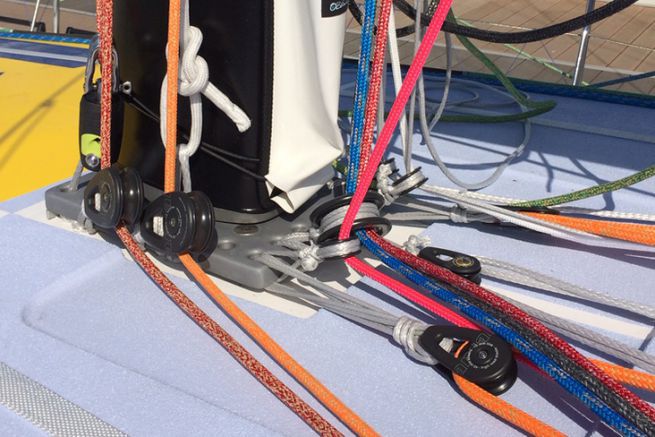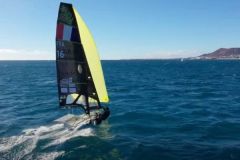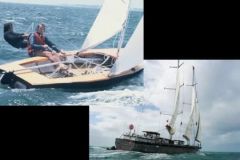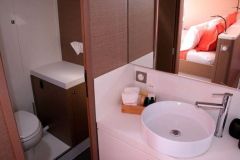Coming from the mast or the foredeck, the manoeuvres of a sailboat converge aft by running over the deckhouse. This is the most classic configuration to allow the crew to remain sheltered behind the deckhouse during manoeuvres. This also makes it possible to carry out manoeuvres from a single point, which is very practical when sailing with a small crew.
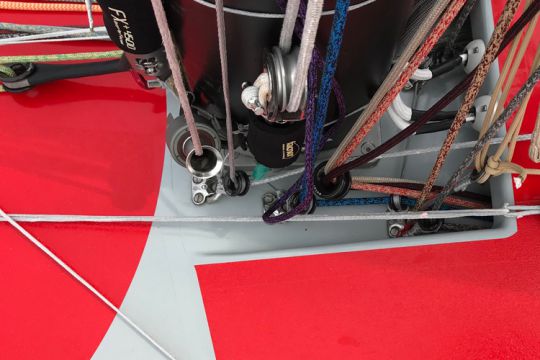
The piano for the maneuver
The piano is therefore the place where all these strings are concentrated, often arranged on either side of the descent. If you follow the route of the ropes, you can see that they come out of the mast foot, are redirected backwards with a succession of guides before ending up in the blockers installed in front of the winches.

Mast foot pulleys
At the foot of the mast, the pulley has 2 functions. It must allow the halyard to make its 90° turn, it arrives following the vertical and must run horizontally on the deck. But this pulley will take up all the effort during the entire navigation phase. The continuously tensioned halyard puts a lot of strain on this pulley.
This is why racers, but now also many boaters, are replacing these mast foot pulleys with friction rings. Sufficiently slippery, these rings require no maintenance and are extremely light and strong. They are attached to the place of the pulley which they replace with a simple Dyneema loop. They also take up much less space than the pulley they replace.
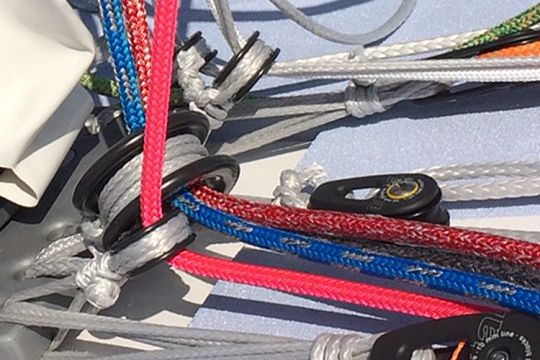
Reef bump returns
On the old yachts, the reef bumps remained at the foot of the mast, forcing the crew member who wanted to reduce the mainsail to move there. Today we report these maneuvers down to the piano. But this generates a lot of stringing with sometimes problems of space to guide all these returns.
Antal proposes to install a single friction ring to pass all the reef bumps. Indeed, they are only used successively, never simultaneously. A single large ring is sufficient to allow all the ropes to pass through, thus simplifying the mast step.
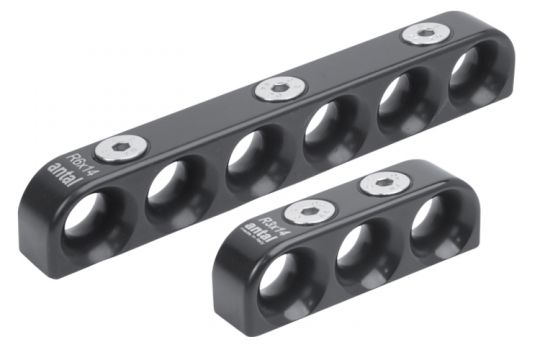
Organize them
With the multiplication of maneuvers, it is often necessary to increase the number of organizers to guide the ropes backwards. At Antal, you can choose friction organizers. These beautiful machined parts, positioned in the bisector of the rope angle, take up little space. We can therefore plan to multiply the number of passages.
If you want to keep the pulley organizers (which offer less friction) you can stack them if you want to increase the number of pulley organizers.
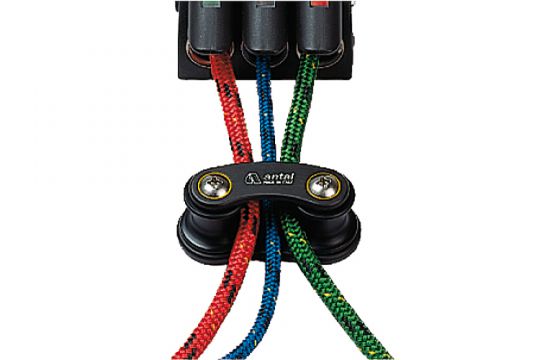
Blockers
In the same way, Antal blockers can be combined in blocks of three. This reduces deck space and increases the number of manoeuvres that can be performed in front of the winch. When choosing combination blockers, all ropes should be of the same diameter. It is not possible to combine blockers of different sizes..
Caution, because the blockers do not support the rope to make an angle greater than 10° in exit. If you have to use a winch that is offset, a flat deck sheave or wire rope to deflect the rope(s) will be required.
